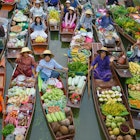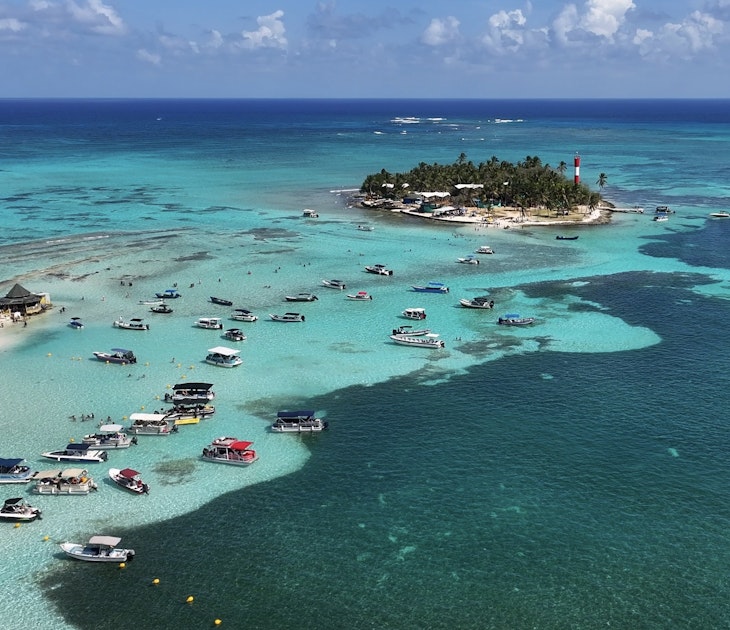
Cambodia is considered one of the friendliest countries in Southeast Asia. Thanks to an unbreakable spirit and infectious optimism, the Khmers have prevailed. No visitor comes away without a measure of admiration and affection for the inhabitants of this enigmatic kingdom.
General health is more of an issue here than in many other parts of Southeast Asia, due to a lack of international-standard medical-treatment facilities, a prevalence of tropical diseases, and poor sanitation. Once you venture into rural areas you are on your own, although most provinces have a reasonable clinic for minor health problems.
- placement: fullWidth
- path: articles/in-content-top
- possible size: [970, 250], [970, 90], [728, 90], [300, 250], [320, 50], [1, 1],
- targeting:
{ "url": "things-to-know-before-traveling-to-cambodia", "destination": "Cambodia", "continent": "Asia", "country": "Cambodia" }
Cambodia is generally a very safe country to visit, but occasional crimes and scams do happen so it is best to minimize the risks where possible. Whether you're a first-time visitor or returning once again, this guide can help you plan the essentials for your trip.
Cambodia's use of currency can be confusing
Cambodia’s official currency is the riel (4000r = US$1). The US dollar is used as a parallel currency and accepted everywhere, although small change may arrive in riel. Just to confuse matters, in towns bordering Thailand Thai baht (B) is also accepted.
Get yourself a krama as soon as you arrive
Purchase a krama, a traditional Cambodian checked scarf, as soon as you arrive – it's a multipurpose travel towel that the locals use in a multitude of ways. The primary use is protection from the sun, dust, and wind, but you can also use it as a quick cover-up sarong-style, to towel yourself down after a dip in the pool, and as a makeshift pillow. Essentially the list is as long as your imagination and it takes up virtually no space in your backpack compared to the multiple equivalent products it dupes.

Pack lightweight gear and casual clothes for Cambodia
Lightweight and loose-fitting clothes are the best plan in Cambodia, including cottons and linens to combat the humidity. Cambodia is not a particularly dressy place unless you're spending time at high-end bars and clubs in Phnom Penh or Siem Reap, so smart clothes are rarely a necessity. If heading to the upland northeast in November to March, pack a warm top for the cool nights.
What to pack
Lightweight, light-colored clothing to reflect the sun
Comfortable sandals or shoes
Refillable water bottle
Powerful sunscreen and long-lasting deodorant
Earplugs to block out the noise
Unlocked mobile phone for use with a Cambodian SIM card (roaming charges are very expensive, it’s worth buying a cheap SIM upon arrival)
A light raincoat if traveling in the wet season.
There is some important etiquette to keep in mind
Cambodian people are very gracious hosts, but there are some important spiritual and social conventions to observe.
Always be respectful at a Buddhist site
When visiting temples, cover up to the knees and elbows, and remove shoes and any head covering when entering temple buildings. Sit with your feet tucked behind you to avoid pointing them at Buddha images. It's also good to leave a small donation. Women should never touch a monk or his offering bowl – the Buddhist faith believes it is contrary to a monk's sacred vows to be in close proximity to a woman that isn't a relative.
Use the local greeting when meeting new people
Called the sompiah, the local greeting in Cambodia involves putting your hands together in a prayer-like manner. Use this when introduced to new Khmer friends. When beckoning someone over, always wave towards yourself with the palm down.
- placement: fullWidth
- path: articles/in-content-middle
- possible size: [970, 250], [970, 90], [728, 90], [300, 250], [320, 50], [1, 1],
- targeting:
{ "url": "things-to-know-before-traveling-to-cambodia", "destination": "Cambodia", "continent": "Asia", "country": "Cambodia" }

Bargaining is expected in markets and for transportation
It's important to haggle in markets in Cambodia, otherwise, the stallholder may "shave your head" (local vernacular for "rip you off"). Negotiation is also the rule when arranging share taxis, pickups, and local transportation like tuk tuks if ordering in person and not via a ride-hailing app. The Khmers are not ruthless hagglers, so a persuasive smile and a little friendly quibbling are usually enough to get a price that's acceptable to both you and the seller.
It's important to dress modestly
Avoid wearing swimsuits or scant clothing around towns in Cambodia, even in beach destinations. Wear a sarong or krama to cover up.
Tipping is appreciated
Tipping is not essential but is commonplace in establishments catering to tourists such as hotels and restaurants, and it is standard practice to tip tour guides and drivers on organized tours.
Local health care in Cambodia is basic
Do not visit Cambodia without medical insurance. Hospitals are very basic in the provinces and anyone who has a serious injury or illness while in Cambodia may require emergency evacuation to Bangkok. If you fall seriously ill in Cambodia you should head to Phnom Penh or Siem Reap, as these are the only places in the country with decent emergency treatment.
Pharmacies in the larger towns are remarkably well stocked and you don’t need a prescription to get your hands on anything from antibiotics to antimalarials.
When it comes to tap water, play it safe and avoid it where possible. Bottled water is widely available in Cambodia and many hotels and guesthouses have refill tanks. Ice is generally fine to use, as it is produced in bottled water factories around the country, a legacy of the French colonial period.
- placement: native
- path: articles/in-content-native
- possible size: [f, l],
- targeting:
{ "url": "things-to-know-before-traveling-to-cambodia", "destination": "Cambodia", "continent": "Asia", "country": "Cambodia" }

Elephant rides are not recommended
Though not yet illegal in Cambodia, elephant rides have been repeatedly called out by animal welfare groups as cruel and painful for the animal – some private companies are finally rethinking the practice. Do your research to ensure any animal sanctuary you'd like to visit is ethical and prioritizes the welfare of the inhabitants.
Stay safe in Cambodia with these top tips
The most common crime is bag or mobile-phone snatching, usually perpetrated by thieves on motorcycles. Smartphones are a particular target, so avoid using your phone on the side of the street, especially at night. Walking or riding alone late at night is not ideal, as there have been several incidents of solo women travelers being assaulted in isolated areas, usually after dark.
Most scams are fairly harmless, involving a bit of commission here and there for local drivers. There have been one or two reports of police set-ups in Phnom Penh, involving planted drugs, but these seem very rare and usually involve business owners. Beware the Filipino blackjack scam – don't get involved in any gambling with seemingly friendly folks unless you want to part with plenty of cash.
There is quite a lot of fake medication floating about the region, so only buy prescription drugs from reliable pharmacies or clinics. Be very careful if being offered chemical drugs on the street in Cambodia, as not only are they illegal but may be laced with all sorts of dangerous toxic substances.
Due to the presence of landmines and unexploded ordnance (UXO) in some rural areas, it is essential to stick to marked paths. Keep a close eye on small children in rural areas to make sure they don't stray and do not go off road if you're cycling.
Roads have improved massively in recent years, but conditions can vary widely from the dry to the wet season. Although motorcycles are a popular way to get around in Cambodia, do not attempt it if you're not an experienced driver. The tangled traffic in the big towns and cities is no place for a novice.
Run through this pre-departure checklist before you go
Make sure your passport is valid for at least six months or you won't be allowed into Cambodia
Arrange any recommended inoculations at a travel-health clinic
Purchase travel insurance with decent health coverage
Double-check to see if you need to arrange a visa before arrival
You might also like:
Angkor Wat: everything you need to know about Cambodia's most iconic temple
Siem Reap: 11 best things to do after you explore Angkor Wat
Cambodia's less-traveled islands visitors need to know about
- placement: fullWidth
- path: articles/bottom
- possible size: [970, 250], [970, 90], [728, 90], [300, 250], [320, 50], [1, 1],
- targeting:
{ "url": "things-to-know-before-traveling-to-cambodia", "destination": "Cambodia", "continent": "Asia", "country": "Cambodia" }
Explore related stories






 Destination Practicalities17 things you need to know before visiting Thailand
Destination Practicalities17 things you need to know before visiting ThailandSep 4, 2024 • 6 min read




